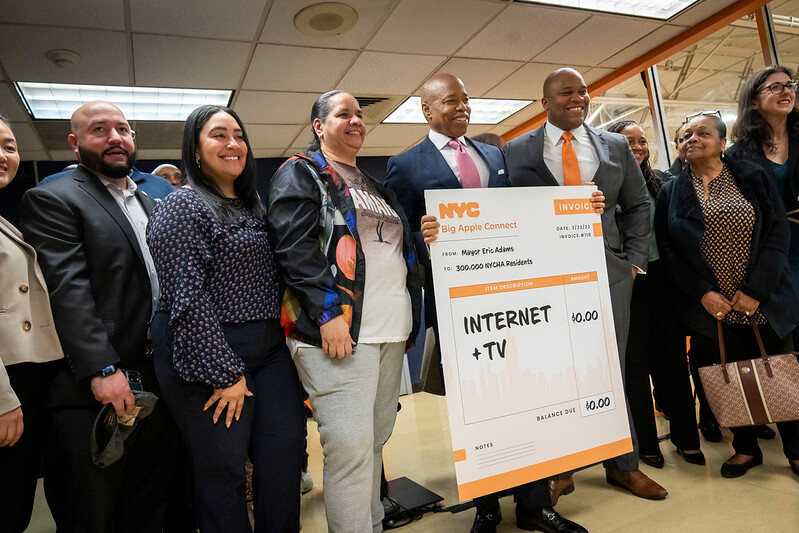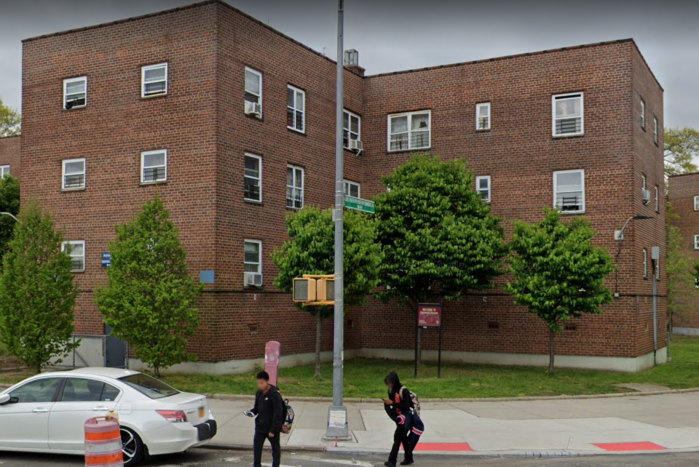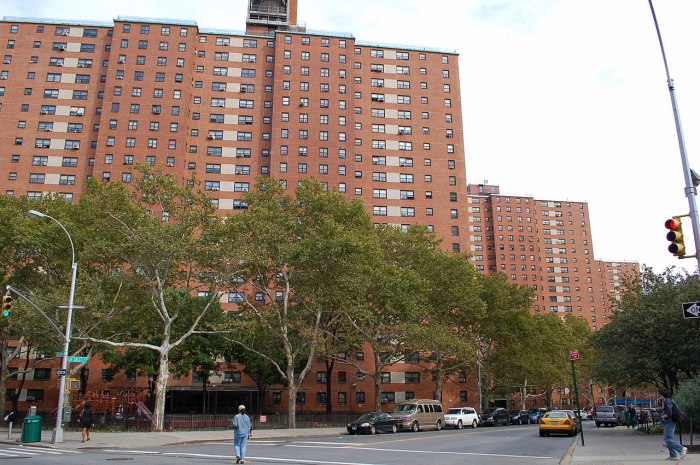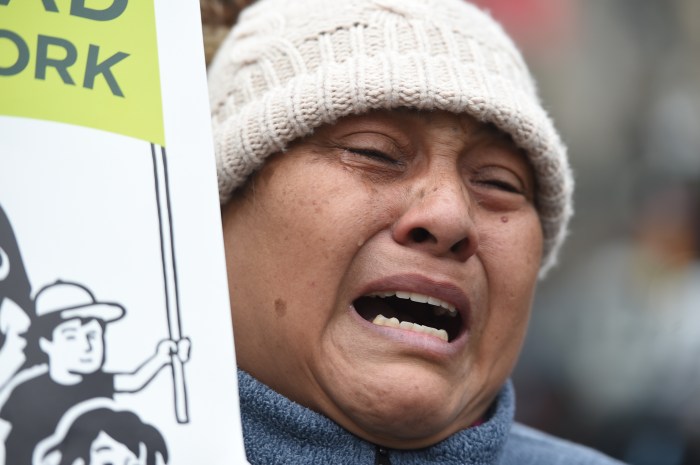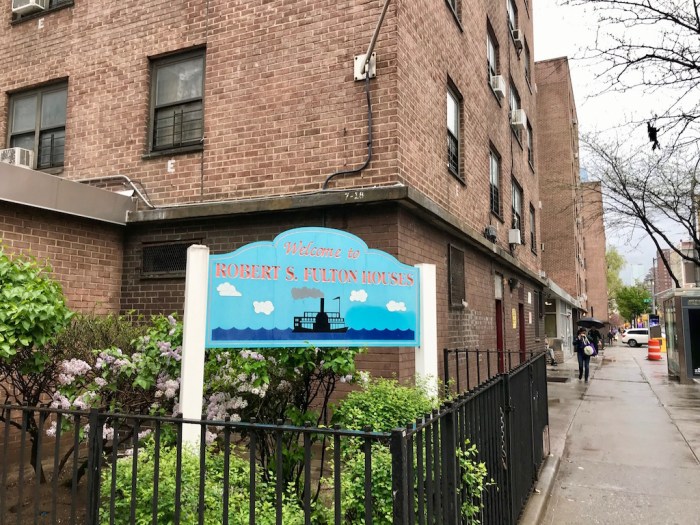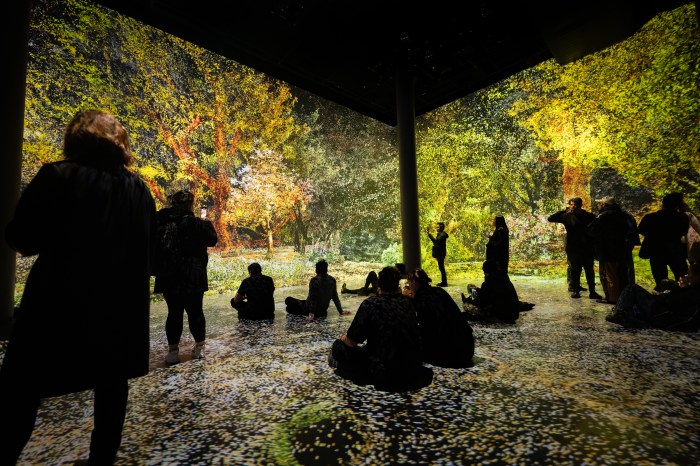More than 100,000 households have signed up for a city program that offers public housing residents free internet and basic cable, Mayor Eric Adams’ office is set to announce Monday.
City Hall is taking a victory lap since more than 220,500 New York City Housing Authority residents — equating to over 100,000 households — across 202 developments have enrolled in the program, known as Big Apple Connect, since it was launched last fall. That means 75% of the households where the service is available have opted into it.
Adams said that at a time when so many aspects of modern life are tied to the internet, access to high-speed broadband should be treated like electricity, water or any other public utility.
“In today’s digital age, reliable, high-speed internet is as essential as water and heat, and I am proud to mark this incredible milestone in our quest to bridge the digital divide,” Adams said, in a statement. “Something as simple as providing free, accessible Wi-Fi can change the life of a New Yorker, and now, 100,000 NYCHA households — who for too long had been ignored — no longer have to worry about accessing the critical digital tools they need to succeed.”
The initiative launched with a goal of enlisting 300,000 NYCHA residents across 200 developments by the end of this year. That’s a benchmark the city’s chief technology officer, Matthew Fraser, told amNewYork the administration will achieve ahead of schedule if it continues enrolling tenants at its current pace.
The larger NYCHA campuses with some of the highest enrollment rates include the Bronx’s Patterson Houses, with 1,518 households; Manhattan’s Grant Houses, with 1,635 households; and Brooklyn’s Brownsville Houses, with 1,067 households. That accounts for 86%, 84% and 81% registration rates respectively.
What the program has done, Fraser said, is get over 100,000 NYCHA households — many consisting of lower income people of color — online, while saving them tens of millions of dollars collectively.
“When you look across the population that we’re serving, and you look at how many of those households have school-aged children, when they went home and they didn’t have access to broadband?” Fraser said, in an interview. “How many of those households have working class adults that are seeking employment that now have connectivity to reach out? And how many of those households support older New Yorkers who need access to telemedicine and those types of services?”
“I mean we’re really coming in and providing a bridge for many who’ve been cut off from community and that’s what we’re celebrating,” he added.
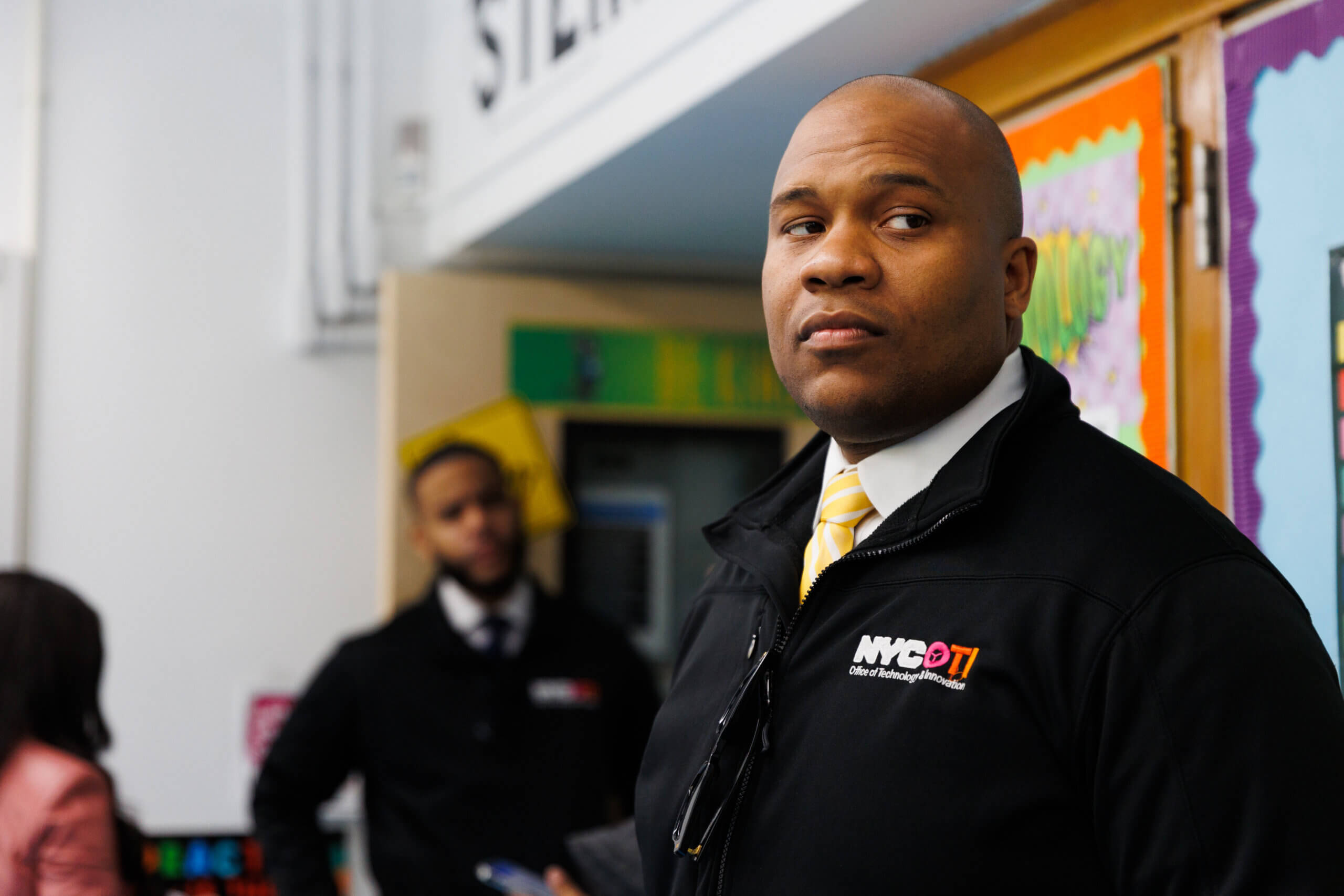
Public housing tenants participating in Big Apple Connect are given a package of free high-speed internet and basic cable, with a modem, router, cable box and remote control all included, according to the mayor’s office. The program also provides Wi-Fi hotspots in NYCHA building common areas.
The city partnered with the internet and cable providers Altice (Optimum) and Charter (Spectrum) for three-year terms to offer the service, with both companies billing the Mayor’s Office of Innovation and Technology (OTI) directly, Adams’ office says. NYCHA residents who already have subscriptions with either company are automatically enrolled in the program.
Fraser said the initiative is funded by $41 million annually that was originally allocated for a wireless network — dubbed the New York City Wireless Network, or NYCWiN — set up to support city agencies’ operations under former Mayor Bill de Blasio. Once Adams came into office and appointed Fraser, NYCWin was decommissioned and those funds were redirected to Big Apple Connect.
While the program is often met with skepticism when OTI first reaches out to NYCHA tenant associations and local elected officials, Fraser said, the reviews from those utilizing the service have been “overwhelmingly positive.”
“The first thing we typically get is everyone asks: ‘what’s the catch?’” Fraser said. “In some cases it may start off with a lot of skepticism. And it’s not just skepticism from the people who are consuming the service or the people that are eligible for the service. It’s also skepticism from other, in many cases electeds that have some concerns about the approach that we were taking. And what we hear from the tenant association presidents is what we have done during this period of time paves the landscape of how people enter public housing and the services they have access to.”
Fraser also noted OTI is looking to expand the program beyond just public housing residents, to low income households who use housing vouchers — like Section 8 — or other forms of public benefits.
“So, [with] Section 8, since there’s already a mechanism in place to assess eligibility [for a] voucher, you’re using that as a means to pre-qualify for Big Apple Connect and move them into the program,” Fraser said.



